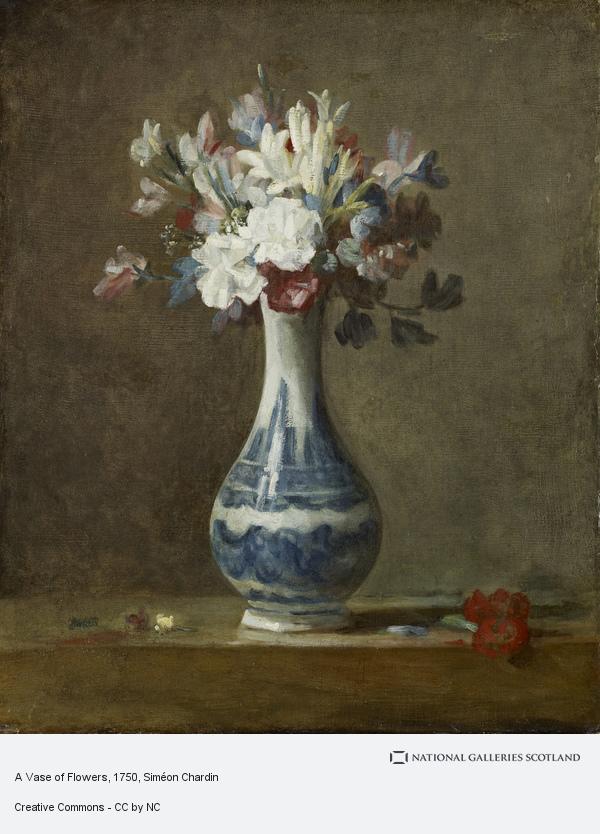A Vase of Flowers
About this artwork
This is Chardin's only surviving flower piece and is one of his best known paintings. It illustrates beautifully his characteristic clarity and restraint. A blue and white Delft vase is filled with a variety of flowers. The white and blue colouring of some of the flowers and foliage echoes those of the vase, complemented by the pinks, reds and touches of yellow in the other blooms. The subtle play of light and shadow distinguishes the table from the background and its sombre tones are relieved by the colourful fallen flowers.
Audio commentary
This commentary is part of the National audio tour. Listen to the whole tour in Smartify.
Updated before 2020
-
artist:Siméon Chardin (1699 - 1779) French
-
title:A Vase of Flowers
-
date created:About 1750/60
-
materials:Oil on canvas
-
measurements:45.20 x 37.10 cm; Framed: 67.00 x 58.80 x 9.40 cm
-
object type:
-
credit line:Purchased with the aid of the Cowan Smith Bequest Fund 1937
-
accession number:NG 1883
-
gallery:
-
subject:
-
glossary:
Siméon Chardin
Siméon Chardin
Chardin specialised in the painting of still-life and simple domestic scenes which were remarkable for their clear, balanced compositions and technical virtuosity. His works were greatly admired by contemporaries and although they belonged to the lowly category of genre there was a ready market for...









